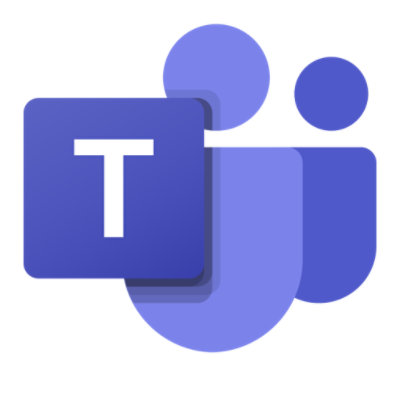Atos recently decided to migrate all its internal information management resources to Microsoft Azure to harness the benefits of a more secure, robust, and agile solution. Moving from its on-premises infrastructure to a private cloud, Atos will have greater adaptability, scalability, and ease of integration in Azure.


About Atos
Atos is a French digital services company founded in 1997. With 105,000 employees worldwide and an annual turnover of 11 billion euros, it is a global leader in digital transformation. It is also a top provider in Europe with respect to cloud services, cybersecurity, and supercomputers, offering integrated solutions in 71 countries and across all industries. Atos is listed on Euronext Paris and included on the CAC 40 Index. It has been the Worldwide IT partner of the Olympic and Paralympic Games since 2001, and will partner in the upcoming Paris 2024 Olympic Games.
The problem
The company's IT infrastructure is particularly large in scope and centered on SAP solutions, including Nessie—a SAP S/4HANA ERP system—along with SAP Fieldglass, SuccessFactors, Ariba, and Analytics Cloud for reporting. The company found this architecture lacking in both agility and scalability, so it sought a more flexible system that could scale as needed.
The solution
Atos chose Microsoft Azure for its RISE with SAP solution hosted on bare-metal certified BullSequana S servers.
Key figures:
- 0 seconds, or close, for recovery point objective (RPO)—that's the maximum acceptable downtime for an IT resource.
- 99.7 percent uptime for the application SLA (service-level agreement), excluding planned maintenance.
- 9 months for implementing the migration project.
Genesis of the project
Atos previously hosted its infrastructure in the company's own datacenters on servers from Bull, a subsidiary of the group.
After extensive discussions with Microsoft and SAP, Atos decided to migrate Nessie, its existing SAP S/4HANA ERP system, to Azure. For the migration, Atos chose to host it in the Frankfurt Azure datacenter, within the Azure availability zone in Germany, which is unique in offering BullSequana S servers that use the new scalable Intel Xeon processors to combine enterprise computing and analytics in a single-server architecture.
“We chose Azure to increase flexibility and scalability, with a system that we can adjust as required. In addition, we have easier interoperation with the services on offer, like Teams and Power BI, and technologies like AI, machine learning, and chatbots. To give ourselves the best competitive edge, we opted for SAP S/4HANA Private Cloud Edition, which runs on bare-metal BullSequana S servers available through Microsoft Azure private cloud services,” explains Frédéric Aubrière, Group CIO at Atos.
Selecting the RISE with SAP solution adds yet another, but no less important, string to the Atos bow. Designed by SAP, it facilitates migration to the cloud with an all-in-one offering that supports infrastructure, software, and service management.
“With RISE with SAP, our customers can support their SAP S/4HANA ERP system and other SAP solutions within their infrastructure on Azure with a single SAP contract. Running on certified Azure environments, SAP can provide the managed services agreed by contract and adhere to an application SLA,” says Thierry Josselin, Business Architect SAP at Atos.
Reflection phase
The project began with a reflection phase to determine how much of the Atos IT infrastructure would migrate to the S/4HANA Private Cloud Edition environment. SAP teams were put together specifically to address this issue.
“Discussions with Atos began when the PCE (later, RISE with SAP) offer was in its pilot phase and mainly concerned the SAP S/4HANA ERP system. We worked closely with Atos and collaborated on formalizing the final offer and the scope of the SAP solutions included, and on implementing, with Microsoft, the corresponding certified environments,” adds Josselin.
In the second stage, the roles and responsibilities of each party were discussed so that Microsoft, SAP, and Atos could assign tasks among themselves. The migration and management of cloud infrastructures were assigned to SAP and Microsoft, while Atos took responsibility for managing the application.
“We worked with Atos on the architecture to define the interconnections between its on-premises environment and its cloud infrastructure,” says Cédric Thomas, Cloud Partner Business Development Manager, Customer Information at Microsoft France.
Expected benefits
This migration will benefit Atos in many ways. With Azure, Atos will have greater adaptability and flexibility compared to its on-premises infrastructure, along with faster deployment times for new SAP releases.
With Azure, SAP and Microsoft will directly manage the lower support tiers. The key is to maintain an SLA level of 99.7 percent uptime and an RPO close to 0. Atos will also enjoy easier interoperation with other cloud technologies and services offered by Microsoft, including Teams and Power BI, along with AI, machine learning, and chatbot technologies.
In terms of security, Atos will have access to Azure Active Directory for single sign-on with SAP, and identity and access management, in addition to Azure Security Center for threat monitoring and Microsoft Sentinel for security information and event management (SIEM). Last but not least, Atos has more robust compliance features—the Azure cloud boasts the largest portfolio of compliance measures among all cloud platforms, with more than 90 certifications globally.
So it's all systems go, meaning that teams can free up time to focus on work with greater added value. With this major advantage, Atos will further improve its competitive edge.
“With RISE with SAP, our customers can support their SAP S/4HANA ERP system and other SAP solutions within their infrastructure on Azure with a single SAP contract. Running on certified Azure environments, SAP can provide the managed services agreed by contract and adhere to an application SLA.”
Thierry Josselin, Business Architect SAP, Atos
Explore related stories
Fuel innovation with Microsoft

Talk to an expert about custom solutions










Follow Microsoft